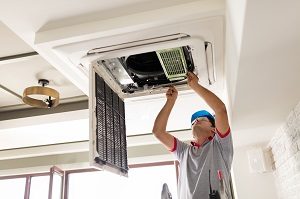By Ivy Riggs, PartneOne Environmental Executive Underwriter
 Often when producers get a request for Pollution insurance, there aren’t any qualifiers that explain the need behind the request. But because there are so many types of environmental coverage available today, a few drill-down questions are usually necessary. What kind of work is the contractor performing? Do they need coverage for a specific project or for all of their annual operations? Are there any waste disposal or transportation components to the risk that should also be addressed? Are coverage extensions needed for Mold liability, emergency cleanup costs, or other contractual requirements? Does the contractor need Pollution Liability insurance for their owned or leased location?
Often when producers get a request for Pollution insurance, there aren’t any qualifiers that explain the need behind the request. But because there are so many types of environmental coverage available today, a few drill-down questions are usually necessary. What kind of work is the contractor performing? Do they need coverage for a specific project or for all of their annual operations? Are there any waste disposal or transportation components to the risk that should also be addressed? Are coverage extensions needed for Mold liability, emergency cleanup costs, or other contractual requirements? Does the contractor need Pollution Liability insurance for their owned or leased location?
Because Contractors Pollution Liability (CPL) insurance often does not include site-specific pollution for first-party exposures, this last question becomes particularly important. In the absence of any contractual provision requiring its purchase, many firms will opt to self-insure the pollution exposures associated with the property they occupy. As part of the risk management process, however, it is very important for producers to make sure their clients understand their own site pollution exposures, as well as the products available to address them. The following summary of common exposures shared by many contractors will help in this process.
The first fact to discover is whether the contractor owns or leases the property they occupy. Many landlords require their commercial tenants to carry Site Pollution insurance, and a review of the lease agreement should make the specific obligations clear. Also, because tenants will often want to satisfy the requirement with the least associated expense, the producer can narrow the focus of their search for the specific mandated terms provided at the lowest cost. On the other hand, if the contractor owns the site, they may want the broadest possible terms available to protect against both first- and third-party liabilities, thereby enhancing their protection of equity and profitability. Knowing the insured’s interest in the property will better enable their risk management partners to economically meet their business needs.
The next element to understand is the full nature of the insured’s operations. For example, an HVAC contractor may readily tell their agent that they want Mold liability coverage for their work at a jobsite. But what they might not explain is that they sometimes also bring their clients’ equipment back to their facility for repairs, or that they specialize in the fabrication of custom installations. Such usage of their own property could entail the presence of solvents, lubricants, fuels, and other materials subject to special handling in storage, daily use, and disposal. An accidental release of these products could contaminate site soils or groundwater, as could improper disposal into an onsite septic system or an inadequately maintained oil/water separator. With a firm grasp on all of the insured’s job-related activities, their agent will be in a better position to recommend measures to plug any coverage gaps.
Pollution risks associated with a contractor’s vehicle fleet must also be considered. Those producers who already control the placement of a contractor’s commercial Auto policy are in an ideal position to assess some of the possible risk factors regarding the insured’s maintenance of a fleet. For those new to the account, it will be important to ask questions concerning where, when, and how these vehicles are refueled, serviced, and stored. Does the contractor’s facility have aboveground or underground bulk storage tanks for fuel or waste oil? Do they utilize in-ground hydraulic lifts to facilitate routine maintenance? Are vehicles stored on impermeable surfaces either indoors or outdoors, or are they regularly parked on bare soils with evident staining? How are used lubricants, solvents, and coolants disposed of? Are vehicles used to temporarily store hazardous materials onsite? Discussing these items will help not only in evaluating the risks, but also understanding which coverage extensions might need to be included: tank pollution (with or without financial responsibility), onsite cleanup, third-party liability, non-owned disposal site liability, and/or temporary hazmat storage.
The key point to remember is that there is no one-size-fits-all approach, even when it comes to insuring contractors with very similar operations. By taking the time to really understand the nuances of the exposure, savvy producers not only create opportunities to cross-sell important insurance products that round out a complete risk management program, but also work to protect their own E&O liability in making recommendations that protect the viability of their clients for years to come.
